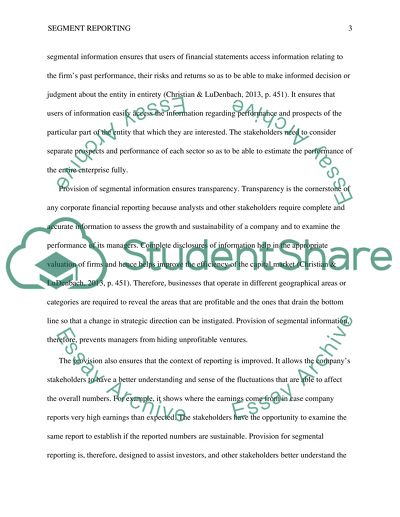Cite this document
(“Do the requirements of IFRS 8 Operating Segments enhance the quality Assignment”, n.d.)
Do the requirements of IFRS 8 Operating Segments enhance the quality Assignment. Retrieved from https://studentshare.org/finance-accounting/1669177-do-the-requirements-of-ifrs-8-operating-segments-enhance-the-quality-of-information-available-to-financial-statement-users
Do the requirements of IFRS 8 Operating Segments enhance the quality Assignment. Retrieved from https://studentshare.org/finance-accounting/1669177-do-the-requirements-of-ifrs-8-operating-segments-enhance-the-quality-of-information-available-to-financial-statement-users
(Do the Requirements of IFRS 8 Operating Segments Enhance the Quality Assignment)
Do the Requirements of IFRS 8 Operating Segments Enhance the Quality Assignment. https://studentshare.org/finance-accounting/1669177-do-the-requirements-of-ifrs-8-operating-segments-enhance-the-quality-of-information-available-to-financial-statement-users.
Do the Requirements of IFRS 8 Operating Segments Enhance the Quality Assignment. https://studentshare.org/finance-accounting/1669177-do-the-requirements-of-ifrs-8-operating-segments-enhance-the-quality-of-information-available-to-financial-statement-users.
“Do the Requirements of IFRS 8 Operating Segments Enhance the Quality Assignment”, n.d. https://studentshare.org/finance-accounting/1669177-do-the-requirements-of-ifrs-8-operating-segments-enhance-the-quality-of-information-available-to-financial-statement-users.


